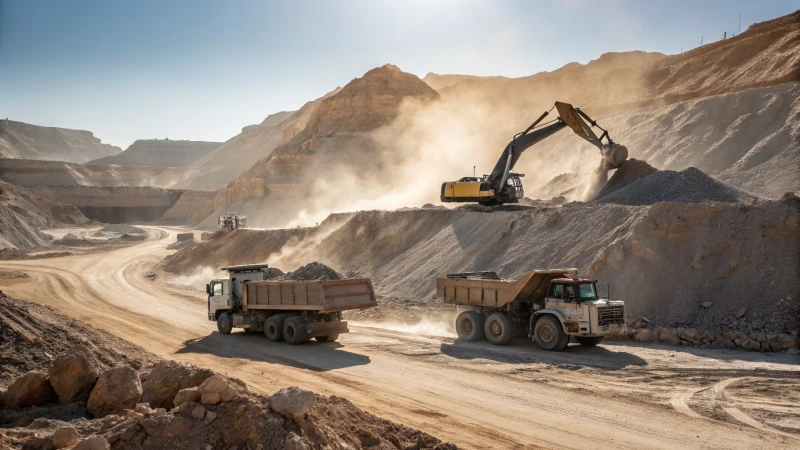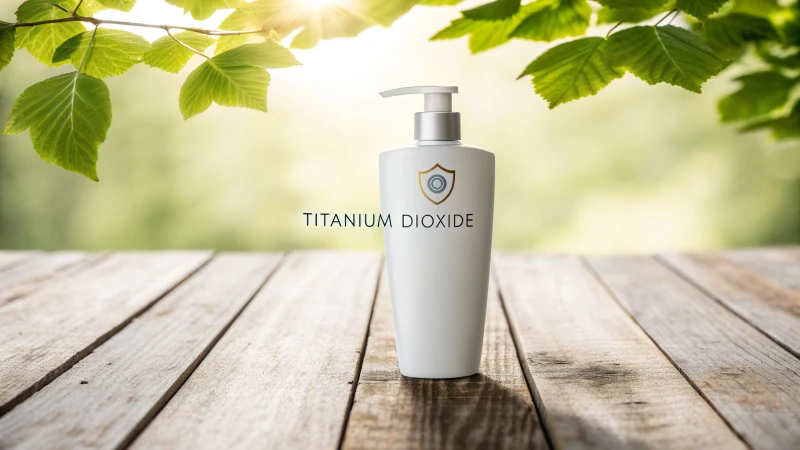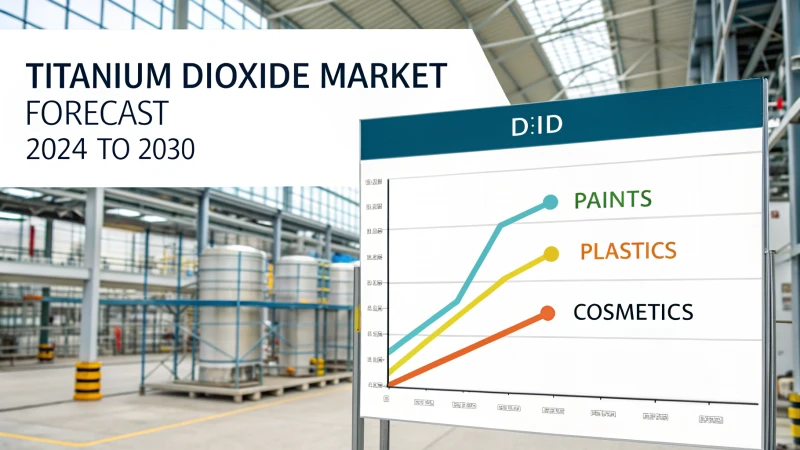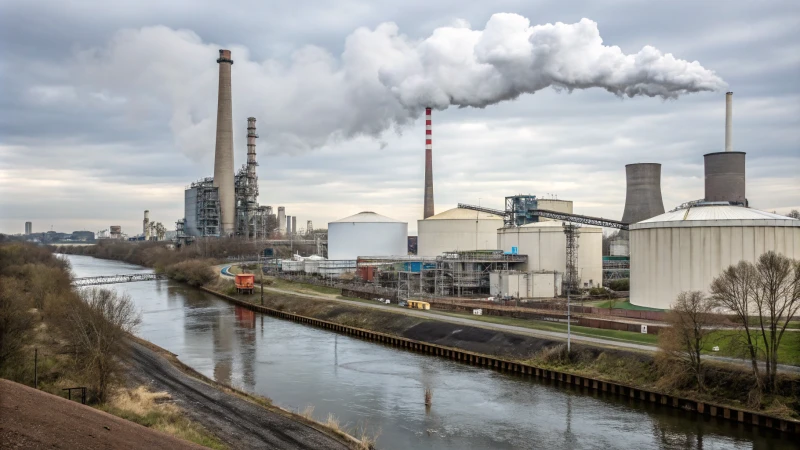
Do you ever question if titanium dioxide is as safe as it seems? Many people do. Many products use it every day.
Titanium dioxide (TiO2) is extremely popular in many industries. However, its impact on nature raises concerns. The compound itself is generally non-toxic. Pollution might occur during production. This warrants evaluation to see if titanium dioxide harms the environment.
Let's explore this topic together. I recall the first time I learned about titanium dioxide in a college chemistry class. It seemed very harmless. Now I question its environmental impact. Titanium dioxide is usually non-toxic. However, its production methods probably cause pollution and this concerns me. We need to look at how it is created and used. The risks of its tiny particles really matter, especially because they might harm aquatic life. Understanding these details helps us choose wisely about the products we use.
Titanium dioxide is non-toxic in its final form.True
While titanium dioxide itself is considered non-toxic, its production can cause environmental pollution.
Titanium dioxide production does not impact the environment.False
The production of titanium dioxide can lead to significant environmental pollution, raising concerns about its overall impact.
What Are the Environmental Effects of Titanium Dioxide Production?
Do you wonder about the unseen costs of everyday products? It's very important to know the environmental impact of titanium dioxide production. This knowledge is crucial for our journey toward sustainability. Let's explore the effects of this common compound!
Titanium dioxide production impacts nature. This happens through pollutant emissions. Waste generation also plays a role. Mining practices further contribute. Nanoparticle concerns worsen the situation. Effective management strategies reduce these ecological effects. Industries should move toward greener practices.

Environmental Impact of Titanium Dioxide Production
The production of titanium dioxide (TiO2) is not without its environmental challenges. While the final product is generally safe, the processes involved in its manufacture can lead to significant ecological consequences.
-
Pollutant Emissions
- TiO2 manufacturing releases pollutants such as sulfur dioxide and nitrogen oxides into the air. These emissions lead to acid rain, harming forests and waters. This impact is real and affects communities near production sites. I once visited a local plant. There, I saw the efforts to reduce emissions. This experience showed how connected our health is with these processes. For more on industrial emissions, check this article1.
- A comprehensive study highlighted the correlation between TiO2 production facilities and increased air pollution levels, impacting local air quality significantly. This is a crucial aspect for those in industrial sectors like coatings and paints, where operational standards are under scrutiny.
-
Waste Generation
- TiO2 production creates a lot of waste. Many facilities struggle with proper waste management, sometimes causing spills. These spills can poison soil and water, harming nearby communities and nature. Proper handling of waste is crucial to protect our environment.
- The process also generates solid and liquid waste, which must be managed responsibly to prevent soil and water contamination. Some facilities lack adequate waste management systems, leading to potential leaks and spills.
| Waste Type | Potential Impact |
|---|---|
| Solid Waste | Soil contamination, habitat destruction |
| Liquid Waste | Water pollution, harm to aquatic life |
| Air Emissions | Respiratory issues in nearby populations |
- Mining Concerns
- Mining titanium ores heavily impacts the environment. Extraction can ruin landscapes, especially in sensitive areas. I read how mining leads to deforestation and biodiversity loss. This fact is haunting.
- The extraction of titanium ores can have devastating effects on landscapes, particularly in sensitive ecological zones. Mining activities can lead to deforestation, loss of biodiversity, and disruption of local water sources.
- Responsible mining practices are vital. For more insights on responsible mining practices, refer to this guide2.
Nanoparticle Concerns
Titanium dioxide nanoparticles in products add complexity. Think about applying sunscreen every morning; those small particles wash into oceans.
- Research suggests nanoparticles collect in marine life, disrupting ecosystems. This thought about long-term effects on food chains worries me.
- Studies suggest that nanoparticles can accumulate in marine organisms, potentially disrupting food chains and affecting biodiversity; research is ongoing to understand these impacts fully; however, the emerging evidence suggests a need for caution in their usage.
- Ongoing studies reveal more impacts; we should be careful about nanoparticle safety—check this resource3.
Mitigation Strategies
Understanding titanium dioxide's environmental effects starts our path to sustainability:
- Use cleaner production technologies to cut harmful emissions and waste.
- Invest in sustainable mining practices that protect local ecosystems.
- Develop recycling programs for TiO2 products to reduce landfill waste.
- Conduct regular audits for environmental compliance; this action can help lessen the negative effects of TiO2 production.
Focusing on these strategies helps ensure manufacturers benefit from titanium dioxide while improving the planet's health.
Titanium dioxide production releases harmful pollutants into the air.True
The manufacturing process emits sulfur dioxide and nitrogen oxides, contributing to air pollution and acid rain.
Mining for titanium causes no significant environmental disruption.False
Titanium ore extraction can lead to deforestation and biodiversity loss, impacting sensitive ecosystems.
How Are Regulations Addressing Titanium Dioxide Usage?
Understanding the rules about titanium dioxide may feel confusing. This is especially true for people working in manufacturing. These regulations are very important. Knowing them is really crucial for everyone involved.
Regulations on titanium dioxide use vary by region. The EU has banned it in food products because of health concerns. Meanwhile, the US permits it as a food additive. This difference creates questions about safety for manufacturers and consumers. Compliance is also a very big concern.
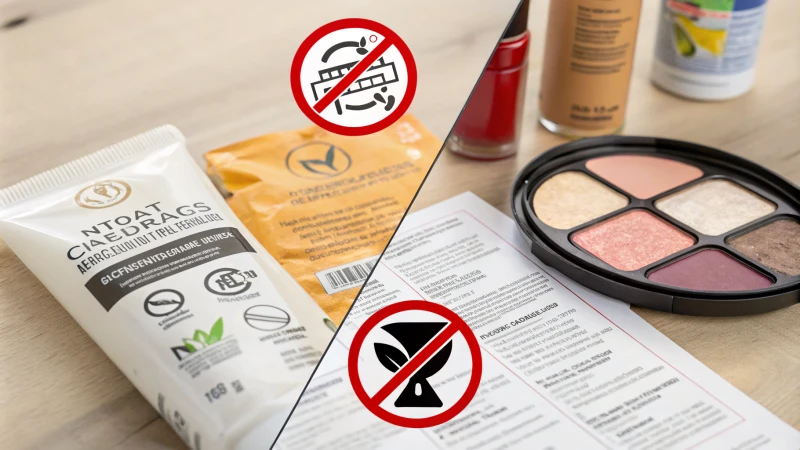
Overview of Titanium Dioxide Regulations
Titanium dioxide (TiO2) is a hot topic, mainly about its use in food and cosmetics. I went to a conference where experts debated its safety. This experience showed me the complex nature of its use. TiO2 is popular for its pigment properties. However, countries now have different views on its usage.
For instance, the European Union decided to ban TiO2 in food products. This choice surprised many and sparked talks about possible health risks. In contrast, the United States still approves TiO2 as a food additive, indicating a divergence in international regulatory standards. The differences highlight the ongoing debate surrounding the safety of TiO2 and its acceptable levels in consumer products.
| Regulation | Region | Status |
|---|---|---|
| Ban | European Union | Banned for food products |
| Approved | United States | Allowed as a food additive |
| Under Review | Canada | Ongoing evaluations of safety |
Impact of Regulations on Industry Practices
I work with manufacturers and see how these rules drive industry changes. Companies must follow laws, which often means changing their supply chains. Paint manufacturers like us must use TiO2 that meets legal rules in every market.
Keeping up with regulation changes is hard. I sometimes think about how to reformulate products to reduce TiO2 but keep quality and safety. It's a tough and careful balance. Learn more about product reformulations4.
Health Risks and Advocacy Efforts
Research looks into health dangers of breathing in TiO2, especially for workers in likely exposure areas. This worry has pushed advocacy groups to demand tougher rules and better labeling practices to inform consumers about the presence of titanium dioxide in everyday products.
There is also a big call for clear sourcing and production. Many companies are acting, starting sustainability projects that focus on responsible mining and cutting down emissions. It's encouraging to see industries moving toward more accountability. Explore sustainability initiatives5.
Future Outlook for Titanium Dioxide Regulations
The future of titanium dioxide rules will continue to change with new studies emerging. For workers in different fields, being up-to-date with changes is vital for compliance and keeping consumer trust.
Additionally, collaboration between industry leaders and regulators could create standard practices worldwide. This journey continues, but together we can navigate these changes. Check out industry collaborations6.
The EU has banned titanium dioxide in food products.True
This claim is true as the European Union has implemented a ban on titanium dioxide for food use due to health concerns.
Titanium dioxide is approved as a food additive in the US.True
This claim is true since the FDA allows titanium dioxide to be used as a food additive in the United States, unlike the EU.
What Risks Do Titanium Dioxide Nanoparticles Pose to Aquatic Life?
I explore the world of titanium dioxide nanoparticles. I feel a strong sense of urgency. These particles are in many everyday products. Hidden risks might be present. These risks could harm our water-dwelling friends.
Titanium dioxide nanoparticles present big dangers to aquatic life. They harm fish and algae. These particles might collect and build up in the food chain. Water quality could also suffer changes. These nanoparticles stay in ecosystems for a very long time. This makes the risks even more serious. Careful management becomes really important.

Understanding Titanium Dioxide Nanoparticles
I remember first learning about titanium dioxide (TiO2) nanoparticles and their amazing properties. They are very useful in sunscreens and cosmetics due to their UV-blocking capabilities. However, I later realized that these tiny particles slip into aquatic ecosystems easily, raising serious concerns for creatures living in these waters.
Risks to Aquatic Life
-
Toxic Effects
I discovered that titanium dioxide nanoparticles are very toxic to various aquatic organisms. Fish and algae suffer from these particles, something we often overlook.- Fish: Fish swim through water and find their gills getting stressed and damaged due to exposure to these nanoparticles.
- Algae: Algae struggle to grow and photosynthesize when TiO2 is present, disrupting the base of the food chain.
- Invertebrates: These delicate creatures face reduced reproduction rates and increased death rates, which is heartbreaking because they play a crucial role in our ecosystems.
I often reflect on life's interconnectedness; one species suffers, creating problems throughout the ecosystem. For more detailed findings, explore toxic effects on aquatic life7.
-
Bioaccumulation Potential
Bioaccumulation of nanoparticles in the food web worried me greatly. Tiny organisms ingesting TiO2 could mean larger fish and humans get affected as well. The long-term implications for health and ecosystems were concerning as these compounds settle into fatty tissues over time. For deeper insights, check studies on bioaccumulation in aquatic systems8. -
Impact on Water Quality
I felt shocked to learn how titanium dioxide nanoparticles change water quality parameters by altering pH levels and disrupting nutrient cycling, which is key for healthy aquatic life. This disruption can cause harmful algal blooms or affect water's oxygen levels, imagining a once-thriving lake becoming a struggling ecosystem. To learn more, see resources on water quality and nanoparticles9. -
Environmental Persistence
I found it striking how persistent these nanoparticles are in nature; unlike larger particles that degrade or filter out, TiO2 nanoparticles linger in water for a long time increasing chances of exposure for aquatic life. It made me realize the need to rethink our risk assessments and management of these materials. For further reading, check out articles on nanoparticle persistence in nature10.
Summary of Risks
| Type of Organism | Potential Risks | Notes |
|---|---|---|
| Fish | Gill damage, oxidative stress | Can affect survival rates |
| Algae | Growth inhibition | Disrupts base of food chain |
| Invertebrates | Reduced reproduction | May increase mortality rates |
| Overall Ecosystem | Altered water quality | Can lead to harmful algal blooms |
Titanium dioxide nanoparticles can harm fish health.True
Studies indicate that TiO2 nanoparticles can cause oxidative stress and damage gill tissues in fish, affecting their overall health and survival.
TiO2 nanoparticles improve water quality in aquatic ecosystems.False
Contrary to improving water quality, TiO2 nanoparticles can alter pH levels and nutrient cycling, leading to negative ecological impacts.
Can Responsible Use Mitigate Titanium Dioxide's Ecological Impact?
The world of sustainability in industries changes constantly. I wonder if using titanium dioxide responsibly might really lower its impact on the environment.
Responsible use of titanium dioxide might really reduce its ecological impact. Sustainable sourcing, effective waste management and informed consumer choices are important. Industries need to understand its lifecycle and possible dangers. They probably adopt practices that balance benefits with environmental care. Environmental care is really important.

Understanding Titanium Dioxide's Role in Various Industries
I have witnessed how businesses start focusing on sustainability. It is really inspiring. People often talk about titanium dioxide (TiO2) and its effect on the environment. I think often about the journey of this amazing compound. TiO2 is present in cosmetics, food, and coatings. It serves many different purposes. However, with great power comes great responsibility. This is why its ecological impact is very important.
For example, in the cosmetics industry, TiO2 is often used in sunscreens. Concerns arise regarding its nanoparticle form, which can potentially harm aquatic ecosystems if washed off into waterways. Explore more on nanoparticles' effects11.
The Environmental Impact of Production
When exploring how titanium dioxide is produced, I notice harmful environmental impacts. It is sad to see that manufacturing releases byproducts like sulfur dioxide. This contributes to air pollution.
| Production Stage | Potential Environmental Impact |
|---|---|
| Mining | Habitat destruction, soil erosion |
| Processing | Air and water pollution due to byproducts |
| Disposal | Contamination from waste materials |
Hope arises from knowing that responsible sourcing very much helps in reducing harm. Sustainable mining and good waste management are key. Learn about sustainable mining practices12.
Strategies for Responsible Use
I reflect on my experiences and consider strategies like these:
- Lifecycle Analysis: Companies study the lifecycle of TiO2 products to understand their ecological footprint. This guides them to better, sustainable choices.
- Regulatory Compliance: Following environmental regulations helps reduce harmful emissions and waste during production. It shows we care.
- Public Awareness: Informing consumers about using TiO2 responsibly is essential. It really empowers them to choose eco-friendly products.
Conclusion on Responsible Practices
Titanium dioxide is mostly safe. However, overseeing its production and use is important. It's about not only what we use but how we do it. Industries need to commit to responsible practices to lower the ecological impact. I truly believe sustainable methods help balance TiO2's benefits and our environmental responsibilities. For further insights, check out industry guidelines for sustainable practices13.
Titanium dioxide production can lead to air pollution.True
The manufacturing process of titanium dioxide emits harmful byproducts, including sulfur dioxide, contributing to air pollution.
Responsible sourcing can reduce titanium dioxide's ecological impact.True
Adopting sustainable mining techniques and waste management can mitigate the environmental effects of titanium dioxide production and usage.
Conclusion
Titanium dioxide is generally safe but its production can harm the environment through pollution and waste. Sustainable practices are essential to mitigate these impacts.
-
Discover detailed insights into the environmental implications of titanium dioxide production and how industries can mitigate its effects. ↩
-
Learn about sustainable mining practices that minimize ecological damage while extracting titanium ores. ↩
-
Explore safety guidelines for using titanium dioxide nanoparticles in consumer products and their environmental effects. ↩
-
Explore this link to understand the nuances of titanium dioxide regulations across different regions and what they mean for consumers and manufacturers. ↩
-
This resource outlines sustainability initiatives within the titanium dioxide industry, promoting responsible practices that align with new regulations. ↩
-
Learn about ongoing collaborations between industry players and regulatory bodies aimed at improving standards for titanium dioxide usage. ↩
-
Explore this link to understand how TiO2 nanoparticles impact marine ecosystems and their implications for human health. ↩
-
This resource provides insights into the bioaccumulation of TiO2 in aquatic food chains and its long-term implications. ↩
-
Learn how titanium dioxide nanoparticles affect water quality and the potential consequences for aquatic ecosystems. ↩
-
This article discusses the environmental persistence of TiO2 nanoparticles and the challenges it poses for ecosystems. ↩
-
Discover how responsible practices can balance the benefits of titanium dioxide with its environmental impact, ensuring sustainability in various applications. ↩
-
Learn about the environmental concerns associated with titanium dioxide production and how industries are addressing these challenges. ↩
-
Explore industry guidelines and recommendations for responsible use of titanium dioxide to ensure minimal ecological damage. ↩


